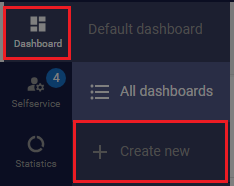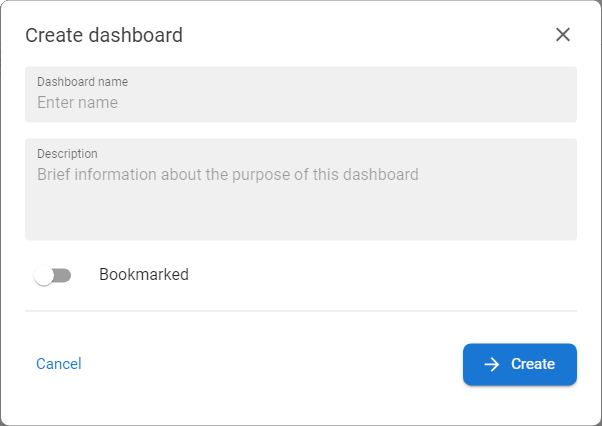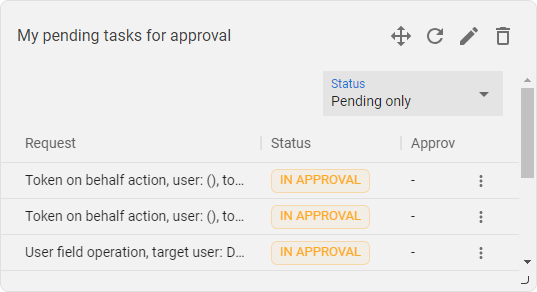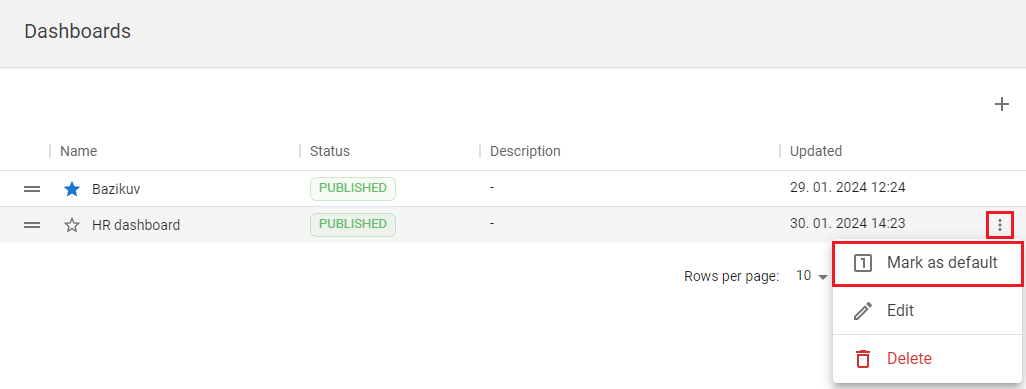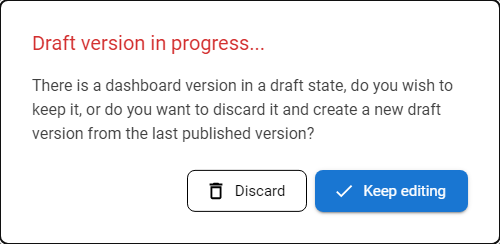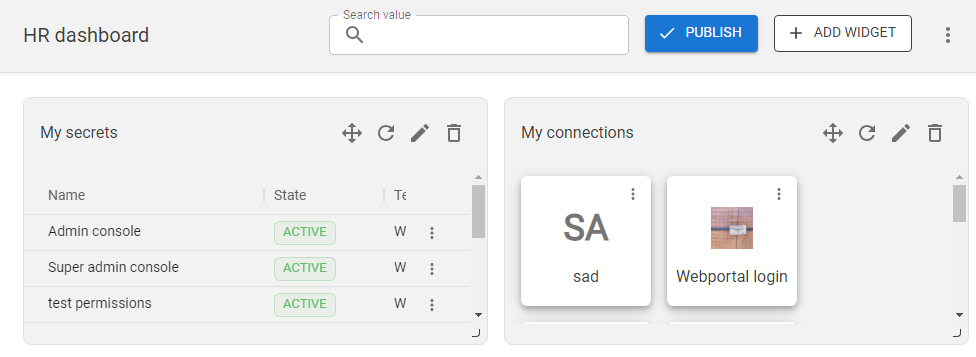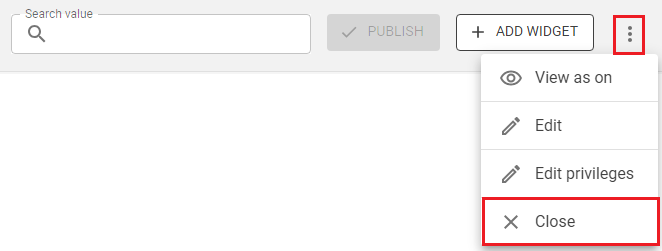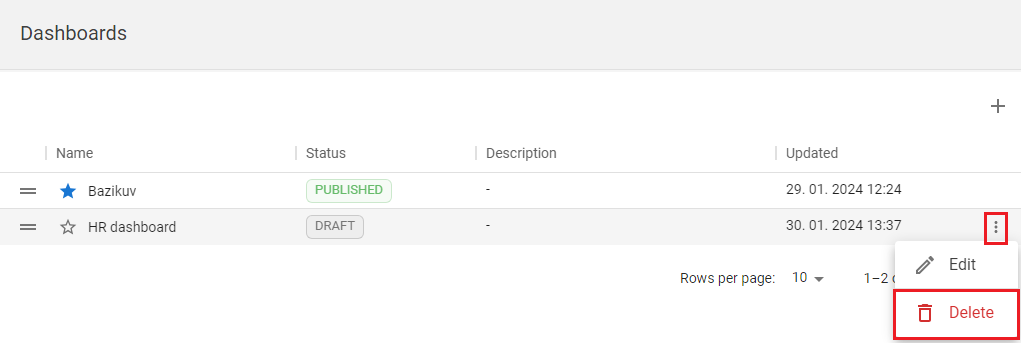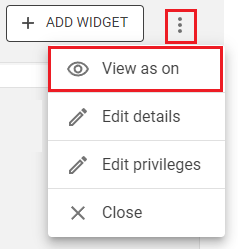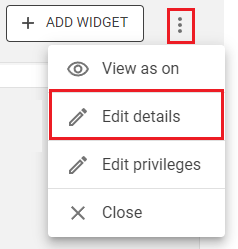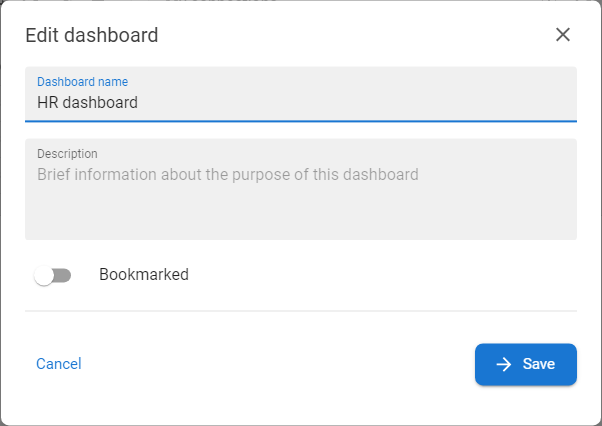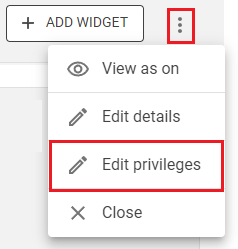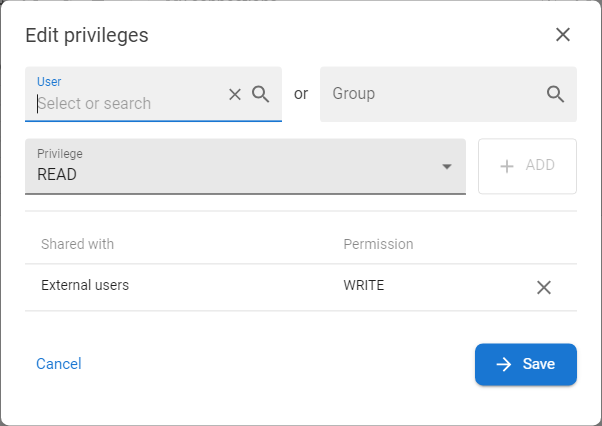Dashboard General Information
The Dashboard is the part of the application that displays predefined sets of data, application links, or other information that can be collected from the system and displayed in one of the widgets. By default, when the user opens the Dashboard section, the default dashboard is displayed. If there is no default dashboard defined, an appropriate message is displayed. Otherwise, the dashboard is bookmarked as default in the section All dashboard is displayed. If the user has no dashboards created, an appropriate message is displayed with the possibility to create a new dashboard either by clicking buttons in the table, or above the table. OtherwiseOtherwise, the user will see the list of dashboards.
Dashboards features:
NewA new screen used as a homepage will display the user dashboard/s.UserUsers can adjust their personal dashboard or open prepared company dashboards- Users with relevant privileges can create new dashboards and decide whether to publish them to other users (groups)
UserUsershas possibility tocan create widgets with an overview of secrets, connections, tokens etc.
Dashboards:
- are reorderable as long as default sorting is used
- are sortable
- are bookmarkable
SingleA single dashboard is selectable as default as long as the dashboard is published
Dashboards statuses:
- DRAFT - newly created dashboard
- PUBLISHED - published to be
officialyofficially used by users - PUBLISHED DRAFT in case the published dashboard has some unpublished changes
Areas of Documentation:
|
|
Describes how to create a new dashboard a make him main or default dashboard for other users. |
|
|
|
Describes how to mark the dashboard as default - only for published dashboards |
|
|
|
Describes how to modify the dashboard. |
|
|
|
Describes how to delete the dashboard. |
|
|
|
Describes how to allow a user to view the dashboard on different platforms (from the resolution point of view) |
|
|
|
Describes how to change the dashboard name and description of the dashboard |
|
|
|
Describes how to set up and/or modify the permissions |
Privileges related to the Dashboard section:
|
GLOBAL_DASHBOARD_VIEW |
Display the Dashboard section in the main menu |
Creating and adjusting a new dashboard
|
1 |
Open the Dashboard and go to the + CREATE NEW menu option option. |
|
|
2 |
Create dashboard modal is opened. |
|
|
3 |
Fill in the Dashboard name, which is required, optionally Description and if the dashboard is bookmarked by default. Note: Bookmarked means that it will appear in this part of the navigation and |
|
|
4 |
Go to the All Dashboards menu option in the submenu to display the list of created dashboards. Mouseclick on the desired dashboard to open it (or user Edit button from the context menu from the list) |
|
|
5 |
Press the ADD WIDGET button to open the |
|
|
6 |
Insert the Name and optionally the Description and select the Type of the widget:
|
|
|
7 |
Check if this widget should be visible on mobile |
|
|
8 |
Press the ADD button to save the widget. The dashboard will be opened and a new widget will automatically load the relevant data. |
|
|
9 |
|
|
|
10 |
When the dashboard is prepared, it could be published so all users can see it. Or it could be set as default so all users will see the dashboard as the landing page when |
Mark the dashboard as the default dashboard
|
1 |
Open the Dashboards menu option from the Navigation menu and go to the All |
|
|
2 |
The list of available dashboards will be displayed. |
|
|
3 |
Mouseclick on the option MARK AS DEFAULT [ |
|
|
4 |
|
|
Modify the dashboard
|
1 |
Open the Dashboards menu option from the Navigation menu and go to the All |
|
|
2 |
The list of available dashboards will be displayed. |
|
|
3 |
Mouseclick on the option EDIT [ |
|
|
|
If the dashboard in PUBLISH + DRAFT status is going to be edited then the warning message is displayed. Discard means that all previously defined widgets and changes in widgets that were not published will be lost. |
|
|
4 |
The dashboard will be opened in |
|
|
5 |
When the changes are done |
|
Delete the dashboard
|
1 |
Open the Dashboards menu option from the Navigation menu and go to the All |
|
|
2 |
The list of available dashboards will be displayed. |
|
|
3 |
Mouseclick on the option DELETE [ |
|
|
4 |
Confirm the message by pressing the DELETE button and the dashboard will be deleted |
View the dashboard on different platforms
|
1 |
Open the Dashboards menu option from the Navigation menu and go to the All |
|
|
2 |
The list of available dashboards will be displayed. |
|
|
3 |
Mouseclick on the row of the desired dashboard or EDIT [ |
|
|
4 |
Open the context menu on the top right
|
|
|
5 |
Choose any option and the dashboard will be visualized as it is opened in the selected platform |
Edit details
|
1 |
Open the Dashboards menu option from the Navigation menu and go to the All |
|
|
2 |
The list of available dashboards will be displayed. |
|
|
3 |
Mouseclick on the row of the desired dashboard or EDIT [ |
|
|
4 |
Open the context menu on the top right |
|
|
5 |
The Edit dashboard modal window will be opened. Adjust |
|
Edit privileges
|
1 |
Open the Dashboards menu option from the Navigation menu and go to the All |
|
|
2 |
The list of available dashboards will be displayed. |
|
|
3 |
Mouseclick on the row of the desired dashboard or EDIT [ |
|
|
4 |
Open the context menu on the top right |
|
|
5 |
The Edit privileges modal window is opened. Permissions define the scope of the user (directly or by group membership) who can work with the dashboard:
|
|
|
6 |
Adjust permissions and press the button SAVE. |








